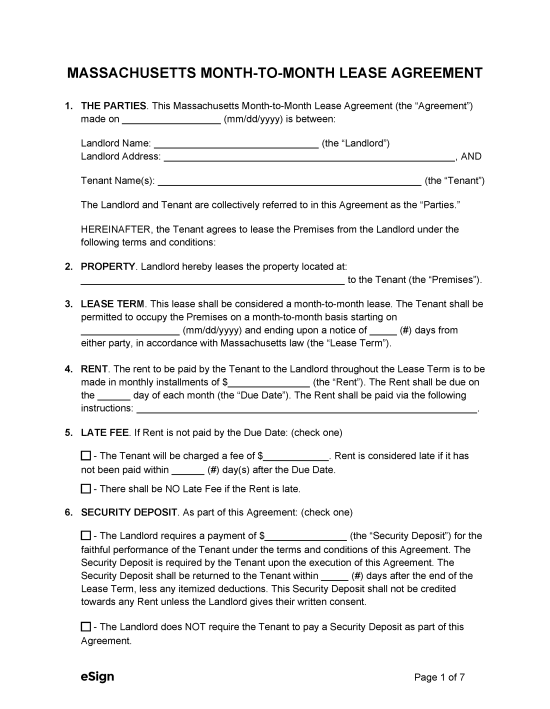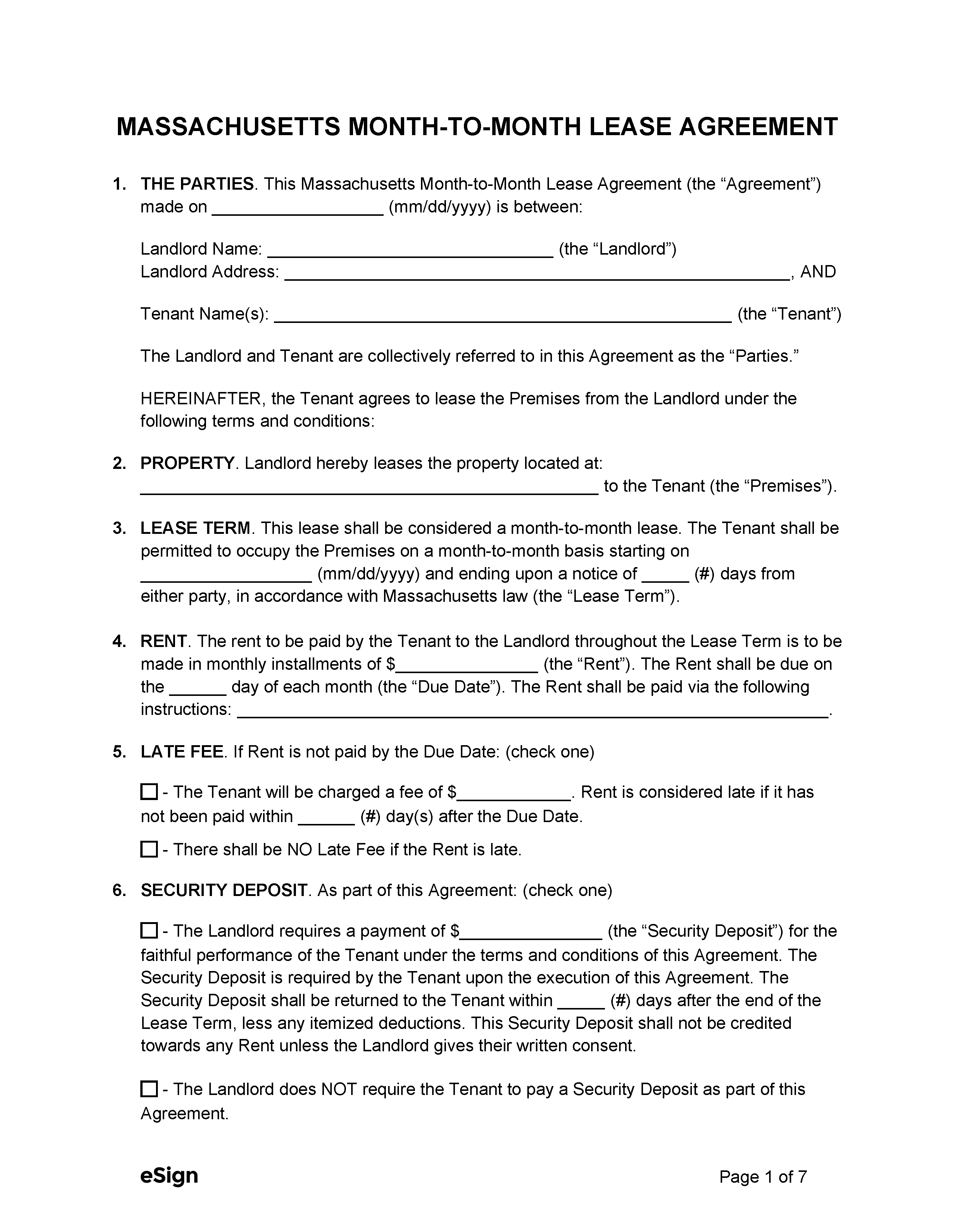Rental Application – A Massachusetts rental application is completed by potential tenants so landlords can learn about their rental history, creditworthiness, and criminal background.
Month-to-Month Lease Laws
- Termination Notice – A month-to-month lease can be terminated by the landlord or the tenant by using a 30-day notice to quit.[1]
- Rent Increase Notice – There is no rent increase limit or notice period mentioned in state statutes.
Required Disclosures (4)
- Fire Insurance – The landlord must inform tenants of their fire insurance coverage and carrier within 15 days of a request.[2]
- Lead-Based Paint Disclosure (PDF) – In accordance with federal law, landlords leasing property built before 1978 must provide a lead-based paint disclosure statement to potential tenants.[3]
- Security Deposit Account – After paying a security deposit, the landlord must provide a receipt within 30 days that details the name and location of the bank, the account number, and the deposit amount.[4]
- Security Deposit Receipt – A receipt displaying the deposit amount, payment date, landlord’s name, and property description must be provided by the landlord after accepting a tenant’s security deposit.[5]
- Statement of Condition (PDF) – When landlords demand a security deposit from tenants, they are required to complete a statement of condition form that outlines the current condition of the premises. The landlord can also complete a Move-in/Move-out Checklist to further document the condition of the property.[6]

